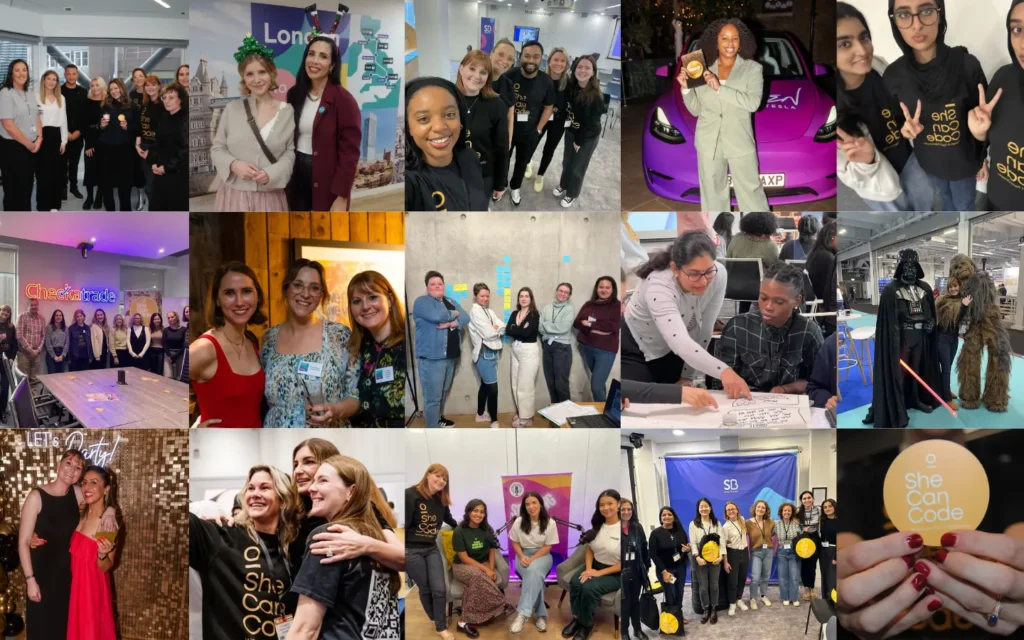Neurodivergent content creators have taken to the TikTok platform, as well as other channels, to share their experiences. These creators are using social media to redefine typical narratives about neurodiversity, hoping to improve understanding and encourage greater support for neurodivergent individuals.
As awareness rises, businesses are becoming increasingly conscious of their neurodivergent employees. An estimated 15-20% of the world’s population exhibits some form of neurodivergence, meaning that neurodivergent employees are likely to be present in almost every company. Leaders should therefore consider how inclusive their workplace environment is for neurodivergent individuals, taking concrete action to improve if necessary.

Sarah Mian, Head of Learning Content, Access Learning, takes a look at why neurodiversity is good for business and how companies can facilitate an inclusive workplace environment for neurodivergent employees.
Sarah sits on the divisional management team for Access Learning and leads the content production function. She has a background in learning design and psychotherapy and uses this to create human-centred learning solutions. She regularly speaks on how to create inclusive learning cultures which develop talent and meet business objectives.
THE KEY ROLE OF NEURODIVERGENCE IN THE TECHNOLOGY INDUSTRY
The term neurodiversity acknowledges that a range of variations exist in the human brain and cognition. Individuals can be categorised as either neurotypical or neurodivergent. Neurotypical people process information and function in a way that society deems ‘the norm’, and neurodivergent people analyse content in a different way. Neurodivergence is a vast spectrum, with neurotypes including attention deficit hyperactivity disorder (ADHD), autism, and dyslexia.
Neurodivergent individuals have a longstanding presence in the technology industry. For instance, Steve Jobs, former CEO of Apple, was known to be neurodivergent. In the 1990s, his ‘think different’ marketing campaign would go on to support the development of the range of Apple products we still use today, including the iMac, iPhone, and iPad.
In fact, numerous people have proposed that neurodiversity is especially crucial within the technology industry. John Levell, former non-executive Chair of the British Dyslexia Association, states that those with neurodiverse brains bring a fresh perspective to the industry which drives success.
ENCOURAGE AN INCLUSIVE WORKPLACE ENVIRONMENT
There are a range of benefits associated with having a diverse workforce which includes neurodivergence. Indeed, organisations with a diverse workforce are 35% more likely to have a better bottom line than others in their industry.
However, diversity and inclusion are not necessarily synonymous. Having a diverse workforce may be excellent on paper, but if an organisation doesn’t intentionally include its diverse workforce, it runs the risk of alienating different individuals and potentially creating a toxic environment.
Neurodivergent individuals experience the workplace differently from neurotypical individuals. For example, CIPD’s ‘Neurodiversity at Work’ report notes that autistic employees may find some elements of social interaction challenging in the workplace, or perhaps experience over-stimulation in busy, noisy workplace environments. Unless an organisation mitigates these experiences through approaches such as flexible working and dedicated training opportunities, it cannot be deemed inclusive of its autistic employees.
To enjoy the benefits of a diverse workforce, organisations must encourage an inclusive working environment. Additionally, employees encountering a lack of inclusion will tend to keep these issues quiet, which can potentially result in absenteeism.
SUPPORT NEURODIVERGENT EMPLOYEES LIVING IN A NEUROTYPICAL WORLD
Leaders can implement a range of different strategies to support neurodivergent employees within their organisation. Fostering inclusivity begins with creating an adapted physical environment, such as introducing quiet areas into the office, or supplying additional IT equipment to neurodivergent employees. Businesses can also consider re-evaluating their recruitment and employee progression processes, to ensure that neurodivergent employees are not disadvantaged at any stage.
Learning and development is equally at the heart of creating an inclusive workplace for neurodivergent employees. Organisations could consider introducing learning modules that explain neurodiversity, helping neurotypical employees explore what it might be like to navigate the workplace as a neurodivergent employee. This learning experience could form part of a broader training programme on diversity and inclusion, to allow the workforce to understand how they can work together to build an inclusive workplace environment.
Ultimately, ensuring that a workplace is inclusive of neurodivergent employees requires leaders to understand what this employee group needs. This only occurs when leaders actively work with neurodivergent voices to truly understand their lived experience. Only then can steps be taken to encourage a more inclusive culture for all, regardless of their background or neurotype.








